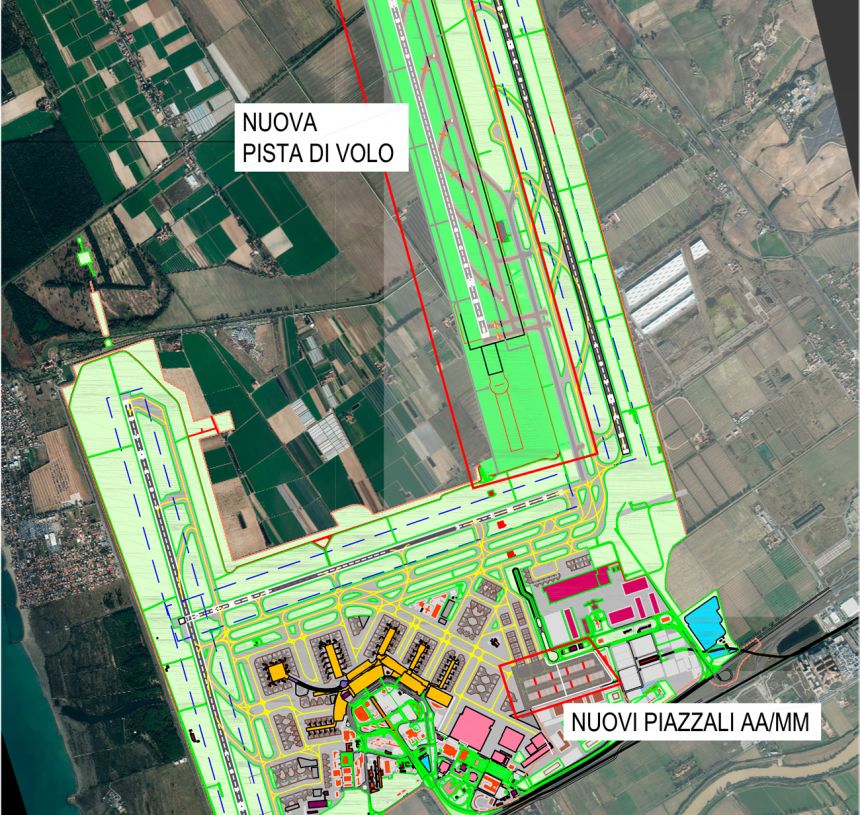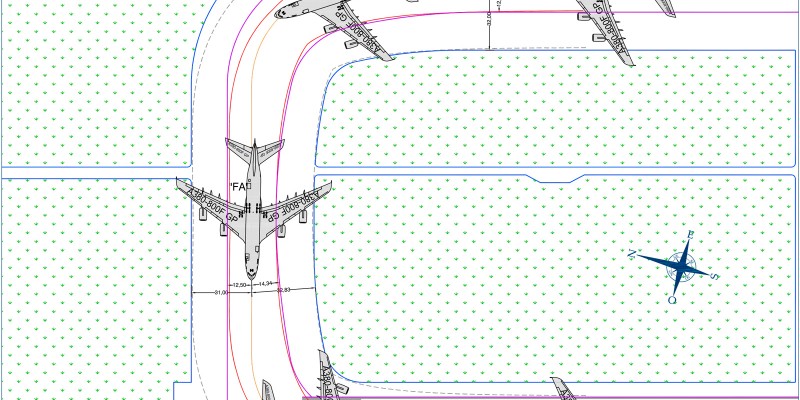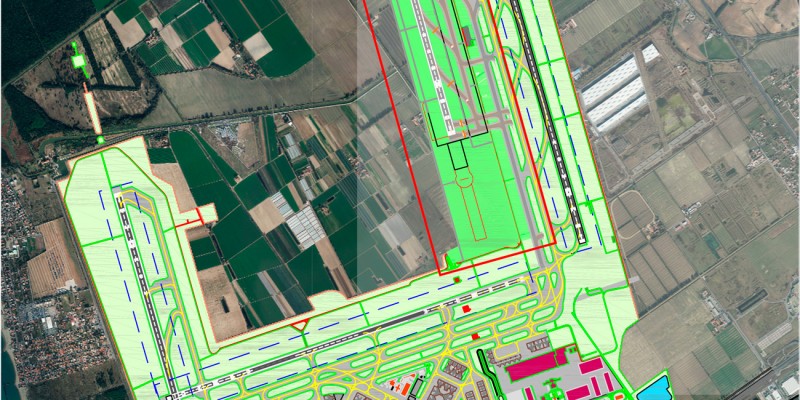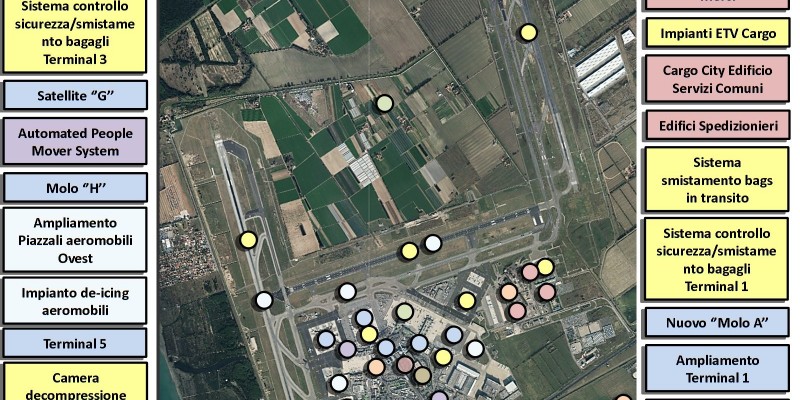
“Leonardo da Vinci” Rome Fiumicino Airport, Airside System – New Runway “16CL/34CR” (Runway 4)
The ”Airside System,, of the Fiumicino Airport currently has three runways with a capacity of 90 aircraft movements/hour (takeoffs and landings).
Country: Italy
Region: Lazio
Client: ADR ‘’Aeroporti di Roma,, S.p.A.
Timing: : 2014.-2015
Contract value: € 517 million
- Cost-benefit analysis
- Preliminary study
- Detailed design
- Environmental Impact Study
- Expropriations
- Coordination of safety at the planning stage
- Archaeological survey
- Technical specifications

The ”Airside System,, of the Fiumicino Airport currently has three runways with a capacity of 90 aircraft movements/hour (takeoffs and landings).
The aim of the development plan is to increase airport traffic from 40 million passengers recorded in the year 2014 to 65 million by 2027, with the consequent need to adapt the capacity of the Airside System to 120 movements/hour, thus confirming the role of Fiumicino as one of Europe’s major airports.
The upgrade project includes the construction of a 4th runway and the expansion of the aircraft aprons.
The new runway, called ”16CL/34CR”, measures 3,300 m in length and 60 m in width. It will be equipped with a complete infrastructural system, which will also include a new taxiway and a network of connecting links: 5 for entering/exiting the runways and 6 for ”rapid runway exits”.
The works will be carried out in a new development area west of the existing airport premises, parallel to the 3rd runway, “16L/34R”, occupying an area of about 280 hectares.
The dimensioning of the new airside infrastructures was carried out with an eye to creating optimal conditions also for the next-generation wide body operations, known as “new large aircraft”, such as the Airbus A380.
The project covers all the relevant hydraulic and plant engineering works to be executed.
For the construction of the infrastructure, a large amount of materials, about 3 million cubic meters, needs to be moved in order to build embankments with gradients capable of guaranteeing the most effective drainage of rainwater.
The foundations in the southern sector of the new airside complex have sensitive clay soils, which have imposed severe limitations on the geo-technical solution adopted. To minimize the risk of subsidence of the foundations due to the embankment load, a large amount of light artificial materials, approximately 500,000 cubic meters, will be used.
The airport upgrading works also include the construction of a new aircraft apron located in the south-east area of the existing apron system, sized to accommodate 20 ”Class C” aircraft aprons and the related taxi lanes.











